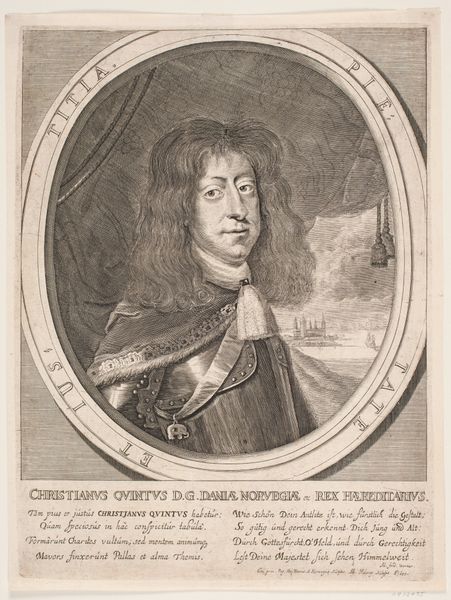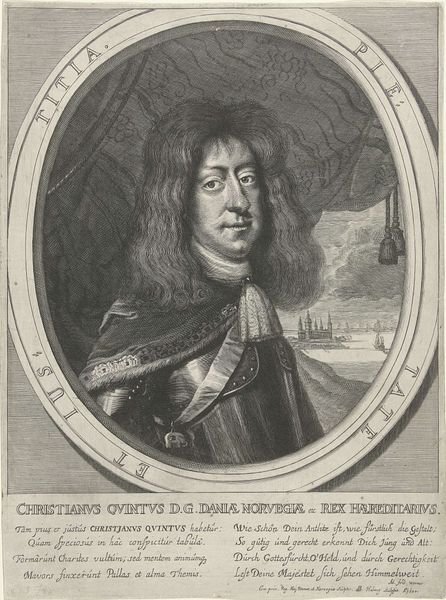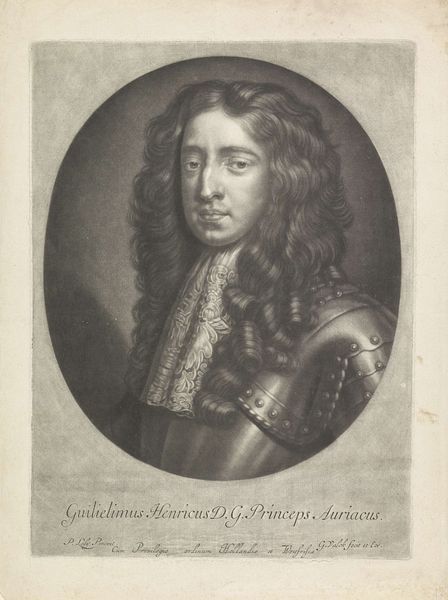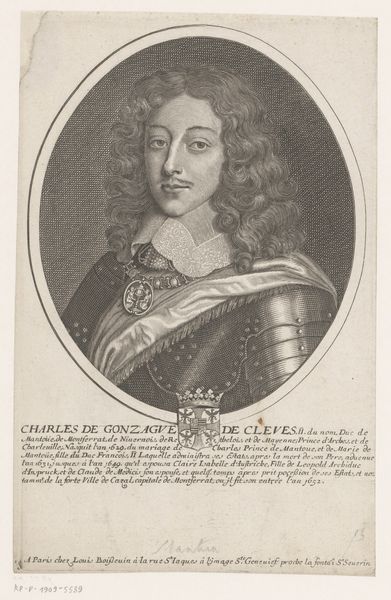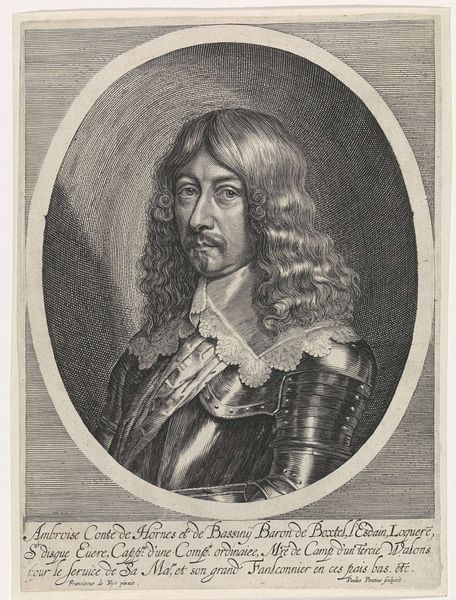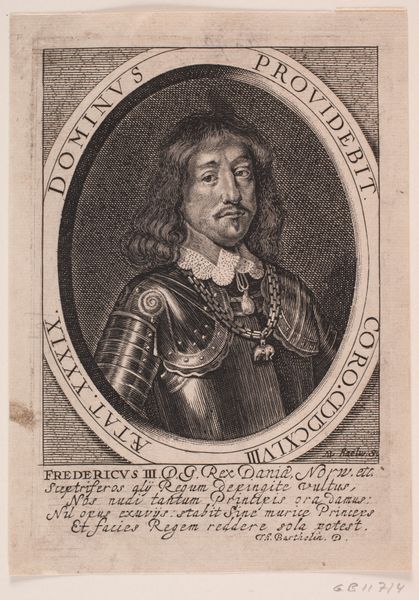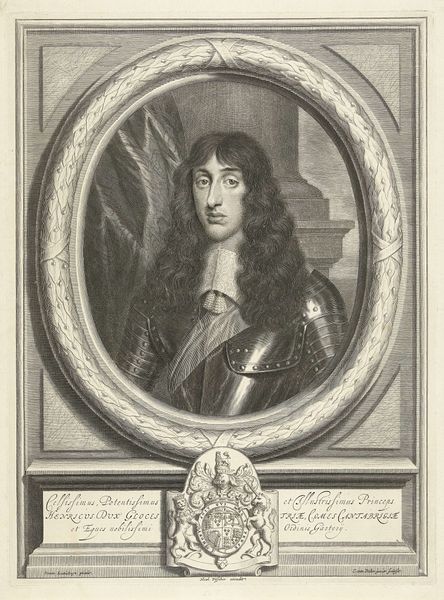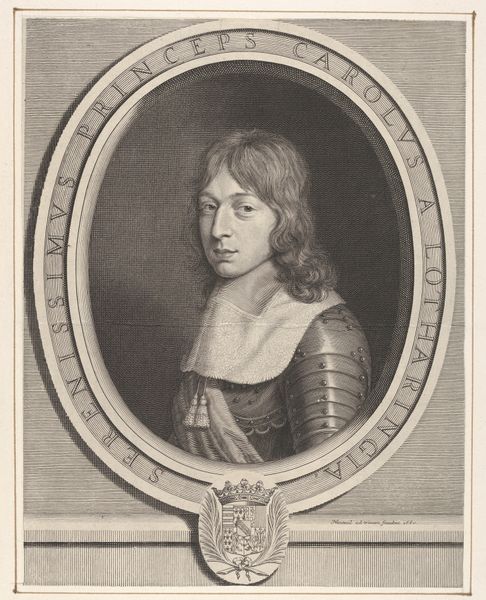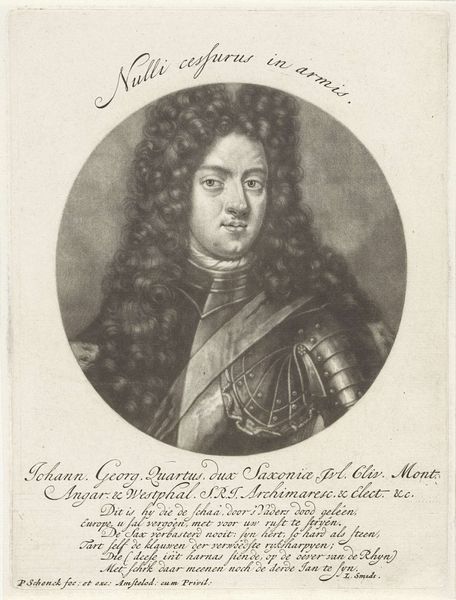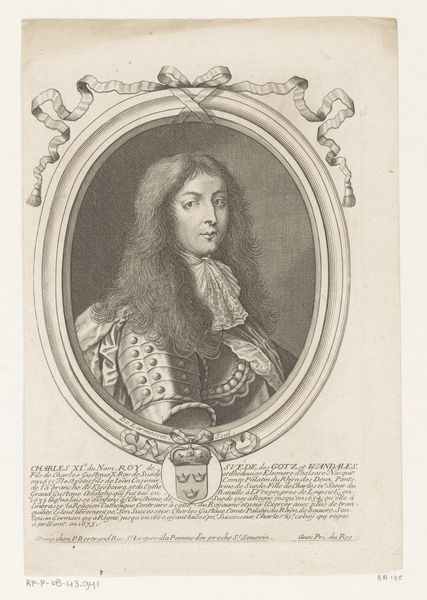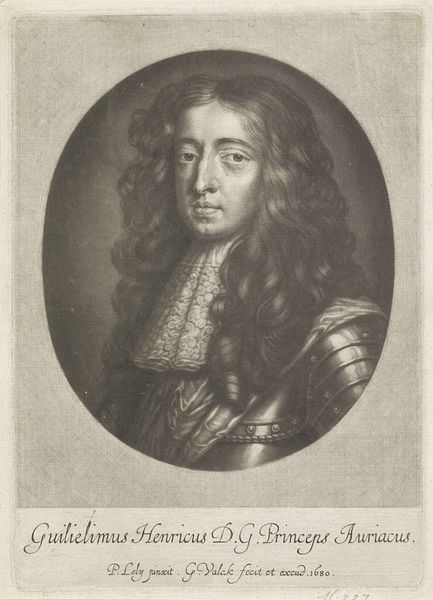
print, engraving
#
portrait
#
baroque
# print
#
history-painting
#
engraving
Dimensions: 365 mm (height) x 267 mm (width) (bladmaal)
Curator: This engraving, "Christian V" made in 1670 by Albert Haelwegh, immediately strikes me as a compelling object lesson in the social construction of power. What are your first impressions? Editor: Well, I'm struck by the level of detail achievable in an engraving. But past that, it feels very... official. What sort of social message do you see in its composition and manufacture? Curator: Let's think about the means of production. Engraving was a laborious process, requiring skilled artisans and specialized tools. Consider the cost and time involved, the restricted accessibility. Who did it serve? Who could afford it, and thus who circulated it? It speaks to a clear agenda, right? Editor: Definitely! The printmaking suggests a desire to disseminate the King's image widely. But the material and labor involved probably limited that to those who already held some status. Curator: Exactly. Think about the material itself – ink, paper – common enough, but here elevated to a tool of statecraft. And look at the framing – that oval border almost seems like a commodity itself, designed for easy framing and display in elite homes. How does it affect your reading of it? Editor: It feels like further evidence of this piece working as a material signifier of power and access – that owning the image meant you were already within a certain social sphere. Almost like...propaganda for the privileged? Curator: Precisely. It blurs the line between "high art" and functional object. Haelwegh’s engraving isn't just a portrait; it’s a crafted artifact actively participating in the construction and maintenance of social hierarchies through its very materiality. It makes me question traditional art boundaries, focusing instead on labor and class consumption. Editor: This has definitely altered my perception, considering the socio-economic implications inherent in printmaking, instead of focusing solely on the aesthetics or historical depiction. Curator: I find the true value lies in what the art can say about who made it, how, and for whom. The materiality tells such an important and engaging story.
Comments
No comments
Be the first to comment and join the conversation on the ultimate creative platform.
